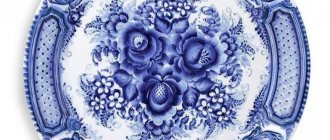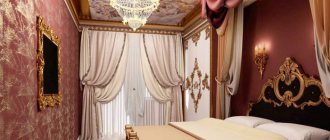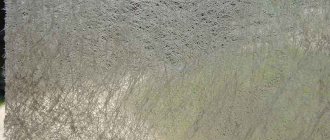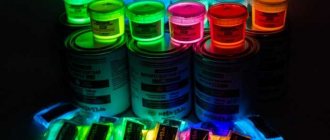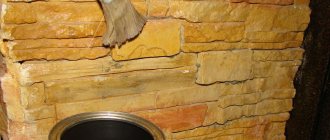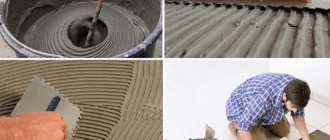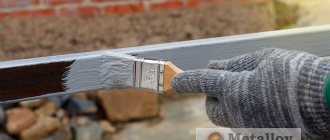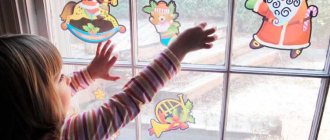The development of construction technologies has contributed to the introduction of innovative solutions to create new multifunctional building materials that simplify work during the construction and finishing of buildings for various purposes.
A prominent representative of modern building materials with a wide range of functions and diverse applications is fiberglass, made from ultra-thin glass fibers with a diameter of 10-18 microns.
It owes its popularity to the availability of raw materials and the environmental friendliness of its components - quartz sand, clay, limestone rocks and glass scrap in the form of cullet .
The use of recycled glass raw materials makes it possible to successfully solve the problems of maintaining an adequate level of environmental cleanliness and obtaining relatively cheap building materials such as fiberglass or glass wallpaper.
Production technology
The basic raw material for the manufacture of fiberglass fabrics is glass elementary fiber filaments, obtained by drawing molten glass mass through platinum dies.
The production of fiberglass is based on the same principle, which you can read about here.
recycled glass based on cullet are used to prepare
The addition of cullet to a mixture of raw materials, called a charge, significantly saves material and energy resources used for the production of fiberglass.
By processing one ton of cullet, more than one ton of the main natural raw materials is saved, including the following materials :
- quartz sand – about 650 kg;
- soda ash - about 185 kg;
- limestone - almost 200 kg.
For every 10% added mass of cullet, heat and electricity consumption is reduced by 3% , since melting a charge composed entirely of natural components requires a higher temperature than a charge containing cullet.
With the introduction of 40% cullet, energy savings will be 12%, which significantly affects production efficiency.
In total, about 3 million tons of fiberglass are produced in the world.
Leading fiberglass manufacturers pay increased attention to glass recycling.
The presence of cullet among the components of manufactured fiberglass reduces the amount of pollutants released into the atmosphere, allowing the manufacturer to save on emissions treatment equipment.
You can read about other ways to recycle cullet and their benefits here.
Differences from glass wallpaper
The technology for manufacturing canvas from glass fibers is fundamentally different from the production of glass fabrics:
- fiberglass is obtained by pressing glass fibers randomly located under the press;
- fiberglass fabrics are woven on textile weaving equipment.
After pressing glass fibers, fiberglass is formed - a thin, smooth material without a pronounced pattern , reminiscent of sheets of paper.
From glass raw materials, fiberglass “inherited” its basic properties - chemical inertness, resistance to open fire and other qualities that made it one of the most popular construction and industrial materials.
In accordance with the production technology, fiberglass differs from glass wallpaper in terms of surface density and functional purpose :
- the density of fiberglass does not exceed 50-65 g/sq.m, which allows it to be confidently used for covering ceilings;
- the density of glass wallpaper exceeds that of fiberglass and is 150-225 g/sq.m;
- fiberglass is a finishing material for covering walls and ceilings, requiring subsequent finishing painting; thanks to its smooth surface, fiberglass can be repainted multiple times without deteriorating the quality of the coating;
- Glass wallpaper is a finishing decorative coating that does not require painting.
With repeated repainting, the surface quality of glass wallpaper deteriorates significantly.
This is precisely the very important difference between them and fiberglass.
Thus, it is up to you to decide what is better to use for painting: fiberglass or wallpaper.
If you plan to repaint the coating several times, the choice is obvious.
You can read more about glass wallpaper and its differences from fiberglass in this article.
What is a "web"
Painting fiberglass is an environmentally friendly and lightweight material created on the basis of fiberglass and organic resin. It is a non-woven fabric, very tear-resistant and does not have a clear pattern. The surface of the canvas consists of fibers, which, unlike glass wallpaper, do not intertwine and are arranged in a chaotic manner. And the material got its name due to its soft and pleasant to the touch texture.
Depending on the thickness, the “web” is divided into classes. On the market you can find options with densities from 25 to 65 g/m2. m. The higher this indicator, the stronger the surface finished with fiberglass will be. However, for ceilings, on the contrary, it is recommended to choose a lighter option that adheres better to a horizontal surface.
Areas of application
In Russia, more than 200 million m² of fiberglass is used annually. In construction and industry, it is used in combination with other materials, which are selected in accordance with the purpose and technical requirements for the final product/object.
So, what is fiberglass used for:
- Production of waterproofing coatings , in which glass fabric sheets serve as the basis for applying bituminous impregnating compounds (roofing). In construction practice, bituminous coatings are used in the form of rolled roofing materials and soft bitumen shingles.
- Production of linoleum, in which fiberglass is used as a supporting frame that prevents shrinkage of the linoleum.
- Production of fiberglass structures, in which fiberglass serves as a reinforcing material for impregnation with binder polymer compositions during the subsequent shaping of the product (boats, containers, etc.).
- Construction, repair and finishing work , in which fiberglass is used for:
- creating protective reinforced surfaces of walls and ceilings;
- forming the finishing coating of walls and ceilings, subject to subsequent decorative painting;
- creating a soundproofing substrate in “floating floor” structures to reduce the level of impact noise.
Soundproofing canvas is a multilayer roll material with a one-sided bitumen-polymer coating, which is used as an elastic soundproofing substrate under a cement-sand reinforced screed.
Application of fiberglass
Painting fiberglass Gossamer
This material is used in construction work. It is used not only for reinforcing the wall or ceiling, but also the floor surface. In addition, fiberglass has proven itself in the production of roofing materials, glass wallpaper, flooring, pipe insulation, panels and batteries.
The high strength of painting fiberglass web, the use of which is found in many areas of construction, allows this material to be used in the manufacture of suspended ceilings, gypsum boards, as well as in the reinforcement of plastic.
How to prepare the surface
To protect walls or ceilings from microcracks using fiberglass, you need to carefully prepare the surface. This process is similar to the procedure for preparing walls for wallpapering and includes the following activities:
- Puttying the surface. Craftsmen recommend filling and smoothing out visible irregularities in order to avoid swelling of the material when gluing.
- Primer. Prime the walls and ceiling before using fiberglass. Do not forget to close all windows and doors while gluing the material - there should be no drafts.
- If the prepared wall is made of plasterboard, the seams are pre-covered and the fiberglass is glued end-to-end.
After the work has been done, you need to decide what glue to use for the fiberglass. There is a special adhesive for such material on the construction market, or the adhesive composition can come complete with a roll of fiberglass.
Take into account the proportions: if the glue is diluted with more water than indicated on the pack, there is a risk that the material will not lie correctly and it will take much longer to dry.
Glue for cobwebs must be purchased with a reserve, since its consumption is several times higher than when gluing ordinary wallpaper. It is best to use ready-made glue in a bucket.
Video:
Basic gluing procedure
To carry out self-pasting of walls, use a fiberglass web 1 m wide. The tools you will need are a wide brush, a construction knife and a flat plastic spatula. The order of work will be as follows:
- Measure the required amount of painter's fiberglass and cut it using a construction knife or scissors. Be sure to use gloves to avoid damaging the skin of your hands.
- Take a brush and coat the wall with glue along its entire height and along the width of the fiberglass roll.
- Place the pre-cut canvas against the wall and press it with a plastic spatula, starting from the center of the canvas. Gradually smooth the surface with a spatula from the center to the edges, expelling any air bubbles that have appeared from the fiberglass.
- Cut off the excess material, then apply the glue again with a brush on top of the fiberglass. This is done for better impregnation of the product and reliable adhesion to the wall surface.
- Again, run the spatula directly over the adhesive. The fiberglass may darken a little - there is nothing wrong with that, the material will simply absorb moisture.
- It is recommended to overlap the next sheet with the previous one. Do the same operations as with the first sheet, then take a sharp knife and draw a line through two layers of fiberglass. Remove excess strip of material. When working on corners, the canvas must be cut.
- When gluing the ceiling with fiberglass web, the use of protective glasses and a face mask will be mandatory. Sheets for the ceiling should be cut to a length of no more than 2 meters so that there are no difficulties in working.
It will take about a day for the painting canvas to dry completely, after which you can begin finishing. If you plan to paint the wall, you must first putty the surface.
If a crack appears, which is unlikely, the situation can be corrected quite easily. Cut a patch from the material and glue it directly on top of the putty, while its width should be 6 cm larger. Using a knife, make a cut around the perimeter and remove the old putty and canvas. This way, you will get a patch that is ideal in size, which needs to be glued and later puttied.
The use of fiberglass is recommended if you want to reinforce walls and protect them from cracks: this material significantly extends the service life of the finish.
Video:
Video:
Varieties by density
The technology for the production of fiberglass is based on pressing chopped or staple fiberglass, the result of which is a fairly soft and flexible non-woven material .
Depending on the size of the pressed elementary fiber filaments (diameter and linear length of the segments) and the method of joining glass fiber threads in the panel, the surface density of glass fiber varies from 25 to 450 g/sq.m. m with a panel thickness of 0.5 to 4 mm.
In accordance with the absolute value of the density of fiberglass, its operational purpose changes. As this technical characteristic increases, the indicators of its mechanical strength increase proportionally.
Currently, there are three groups of fiberglass, united by density indicators, a set of functions and scope of application.
From 25 to 65 g/m²
They are produced using wet pressing technology, identical to the manufacturing process of smooth paper sheets .
Canvases of this group are used for finishing walls and ceilings, for which they are called painting fiberglass canvases.
A more popular name for the materials of this broad group is “cobweb”, which they received because of their translucent texture, reminiscent of an openwork woven web.
For writing paper for copiers and printers, the standard surface density is within 80 g/sq. m. The density of the “web” is one and a half to two times lower than a sheet of paper .
To make a “web”, glass fibers with a diameter of 10-11 microns are used with a length of the constituent glass fibers of 6-10 mm (data for Spectrum SN 30 brand fiberglass painting canvas was used).
To strengthen the structure during pressing, modified polyvinyl alcohol is used .
Another name for painting fiberglass - glass interlining - was assigned to it due to its identity with painting interlining, which is a non-woven paper-like finishing material based on glued cellulose fibers.
From 60 to 200 g/m²
These materials differ from painting “gossamer” in their pressing technology:
- glass fibers are combined using synthetic resin components;
- the fibers are unevenly distributed throughout the volume, forming a rough, rough, uneven surface, while fiberglass has a smooth and soft surface, and the fibers are evenly distributed, without clots or compactions.
Fiberglass canvases of this group have found their application as waterproofing materials , which is why they are often called roofing and bitumen fiberglass canvases (depending on the type of binder component and its quantity).
Outwardly, they no longer resemble a weightless “cobweb”, but look like a dense, opaque fabric with the following characteristics:
- glass fiber diameter – from 13 to 18 microns;
- fiber length – 12-18 mm;
- panel thickness -0.5-1.0 mm.
It should be noted that roofing fiberglass and bitumen mastics well
The use of roofing fiberglass is regulated by GOST 30547-97 “Rolled roofing and waterproofing materials. General technical conditions".
The most popular brands are::
- Fiberglass of the Technonikol brand, produced according to TU 5952-001-13344965-2004. The density of the material is 100 g/sq.m, the thickness of the panel is 0.8 mm. The glass fiber used has a diameter of 13-16 microns and a fiber length of 12-18 mm.
- Fiberglass brand VVG, produced in accordance with TU-21-5328981-16-96 in widths of 200, 400, 1000 and 1200 mm. The maximum fiberglass diameter is 18 microns. The thickness of the panel is 0.5 mm, the surface density is from 60 to 200 g/sq.m, depending on the type of binder.
- Fiberglass reinforced grade HSA, produced according to TU 5952-012-04001485-97. Reinforced fiberglass canvas differs from its competing analogues (Tekhnonikol and VVG canvases) increased mechanical strength due to glass fiber reinforcement in the longitudinal direction along the entire length of the material in increments of 30 mm. The density of reinforced fiberglass varies from 45 g/sq.m (for the XSA-45 brand) to 115 g/sq.m. m (brand HSA-115). According to experts, HSA significantly surpasses traditional VVG in physical and technical parameters and is a more suitable quality basis for applying modern bitumen-polymer coatings.
Fiberglass is also used to create multilayer bituminous roll materials, of which the most popular is glass insulation TU 5774-004-00289973-96 grades K-3.5 (HKP) and K-4.0 (HKP).
The surface density of such coatings is 3500-4000 g/sq.m. m, since it takes into account the weight of the bitumen mixture and other components of glass insulation.
In the practice of marketing bituminous roofing coatings based on fiberglass, such materials are incorrectly called bituminous fiberglass.
450 g/m²
This type of fiberglass is called pierced.
They are produced by fastening several layers of glass fibers with a diameter of 6-13 microns by knitting and stitching.
The stitching is carried out with glass threads. The formation of the material occurs without the use of binding materials.
The area of application of pierced fiberglass is thermal insulation of building structures and pipeline systems of heating mains.
The accepted name and designation of thermal insulating pierced fiberglass is PSH-T. The thickness of the PSH-T panel is 2.0-4.0 mm.
Preparation of fiberglass for decorative coatings
Decorative coatings, first of all, should be divided into thick-layer and thin-layer, since the preparation is carried out in completely different ways. In addition, the process of gluing fiberglass is slightly different: the glue is applied in a thick layer so that when smoothing the fiberglass, it seeps through. This achieves a high load-bearing capacity of fiberglass; the decorative layer under its own weight will not lead to peeling of the fiberglass covering from the wall.
Fiberglass for thick-layer decorative coatings , such as “Marseille wax” and other interior structures, does not require special preparation. Only the fiberglass is primed with primer-paints filled with quartz sand, possibly diluted with water in the proportion specified by the manufacturer. For application, use a brush or roller with medium bristles. If the fiberglass was glued in the “folk” way, that is, with putty, then before applying primer-paint it is treated with an acrylic fine-grained deep-penetration primer. You can read about this method in the “painting work” section, an article about materials for preventing cracks.
Fiberglass canvas for thin-layer decorative plasters and paints is prepared in such a way as to remove its relief structure. To do this, fiberglass is prepared for putty, then puttied with finishing acrylic painting compounds (as practice has shown, they have better adhesion and minimal shrinkage). If it was glued to putty, then it is primed with acrylic impregnations, otherwise no preparation is made. In order to putty fiberglass with high quality, you need to try to complete the work in one thin layer, not exceeding 2 mm in thickness. Then everything follows standard technology: sanding the dried layer and priming.
Interior decoration
For interior finishing work in residential buildings and public buildings - children's and medical institutions, offices, hotels - painting fiberglass - "gossamer" - is especially in demand.
The “cobweb” breaks easily until it is glued to any surface.
However, after adhesive impregnation during the process of sticking to a wall or ceiling, its strength is comparable to the strength of steel, which allows fiberglass to serve as a reinforcing material.
This feature provides the web with the following functionality:
- strengthening walls and ceilings to prevent cracking and microcracks;
- increasing surface strength, since fiberglass, even after applying paint and varnish, remains mobile and, during the process of many years of shrinkage of the walls of new buildings, will sufficiently withstand shrinkage loads to prevent microcracks from growing;
- masking existing microcracks and hiding defective areas of the surface;
- leveling the surfaces of walls and ceilings for painting;
- giving a specific decorative texture to the coating of the wall and ceiling for artistic interior decoration and painting.
How to glue fiberglass to walls
First of all, it is necessary to determine the front and back sides of the material. As a rule, the outer side of a roll is represented by the wrong side. If you touch the material, on one side it is smoother, on the other it is fleecy. The reverse side has a fleecy texture, respectively, the front surface has a smooth texture. Gluing should be done with the wrong side facing the surfaces for better adhesion. But, even if you mix it up, nothing terrible will happen if the sticker process itself is carried out correctly and efficiently.
Only the surface of the walls is treated with glue; there is no need to coat the fiberglass material with glue. The walls are first cleaned of dust, dirt and primed either with special compounds or with a weak concentration of adhesive solution. Deep cracks and depressions are sealed with plaster and again treated with primer. After the primer has dried, you can begin gluing the “cobweb”.
When carrying out work, it is necessary to use protective equipment - gloves, a respirator and protect the skin of the body with work clothes. The smallest particles of fiberglass cause irritation on the skin and respiratory organs.
Advantages of use in finishing works
The main advantages of the “web” include the following factors:
- Increased fire safety of a room covered with paintable fiberglass.
- Resistance to open flames and high temperatures in the event of a fire in the room - fiberglass can withstand up to 1300 degrees without destruction and does not emit toxic substances.
- Valuable environmental qualities - spider web coatings do not emit harmful substances and cannot provoke allergic reactions.
- High chemical inertness to corrosion, acids and alkalis.
- No conditions for the formation of fungus and mold .
- is antistatic , as a result of which static electricity does not accumulate on the finished walls and ceiling and dust does not settle.
- Fiberglass is not susceptible to dampness and condensation .
- “Gossamer” does not lose its performance properties during sudden temperature changes .
- Good strength qualities that preserve the integrity of the wall covering in houses and apartments with pets;
- Possibility of repeated repainting without loss of decorative qualities.
- A wall covered with a “cobweb” will not impede the movement of water vapor and air, positively affecting the microclimate of the home.
Summarizing the list of advantages of painting fiberglass as a finishing material, it should be noted that it is fully adapted to modern special requirements for materials for interior decoration of residential and public buildings.
Let us note the following circumstances that are in the foreground of the requirements for interior decoration:
- the hygiene of the coating, which implies the possibility of constantly wiping, washing and disinfecting it;
- antistatic properties of fiberglass material;
- bactericidal properties , allowing the use of “spider web” in clinic rooms, kindergartens, swimming pools and baths;
- moisture resistance;
- good acoustic properties in the room.
Selection of materials
Both putty and glue for fiberglass must be of the highest quality, each layer must certainly dry, and only then can the next one be applied. To solve the problem of what to putty on, you can purchase two types of material or use a universal ready-made composition. It can be applied at any stage, so as not to think about whether I’m using the right putty or not.
The web, despite its slang name, should be purchased quite dense, and it is necessary to consult with a specialist what density is optimal to stick it in specific conditions (private house, apartment in an apartment building, new building, secondary housing).
More glue is used for fiberglass, because this building material is characterized by high absorbency, and its consumption is much greater than that of fiberglass.
Disadvantages of use
The disadvantages of the “cobweb” include the following points:
- The structure of painting fiberglass canvas is soft and pliable , which makes it very difficult to fix it in one position when gluing walls or ceilings, so it is practically impossible to handle the material alone;
- the difficulty of dismantling an already pasted “cobweb”;
- “cobweb” canvases prevent the spread of small cracks , however, simply applying it to the wall is not able to “cope” with the elimination of large defects; when eliminating them, it is necessary to carry out preliminary preparation of the walls and putty them, only then glue the fiberglass;
- painting fiberglass without putty increases paint consumption compared to painting a pre-putty “cobweb”;
- the need to work in protective rubberized workwear and protection of the visual and respiratory organs in the process of cutting and gluing fiberglass.
Fiberglass consists of thin glass fibers, which break . Micro-shards of glass become dangerous to skin, vision and breathing .
Methods of application
Glue the painting fiberglass onto smooth gypsum plaster or onto a layer of starting putty. According to the technology, after gluing, leveling is required with a thin layer of finishing putty (for stripping), then a primer, and then painting. With this sequence of work, paint consumption is minimal; for a good result, 2 layers of paint are enough. Despite the additional cost of putty, if you are using expensive paint, it is better to stick with this technique. This method is also used if the paint is glossy or semi-gloss.
There is another approach. The cobweb is glued and painted after drying. No puttying. The end result is a good result - a slightly structured surface with a slight “hairiness”. But it takes a lot of paint, and for a normal result you have to apply at least 4 layers. The first pass, the paint is absorbed very quickly, the consumption is 3-4 times more than normal. At the same time, the appearance of the wall is unsatisfactory: in some places there is not enough paint, in others - where we went over one place with a roller several times - there is a lot of it.
The second coat of paint takes almost half as much and looks a little better. Consumption continues to decrease, but not at the same rate. After 4 layers, the appearance of the wall is already normal, but the total amount of paint composition is impressive.
After gluing, it is advisable to cover the painting fiberglass with primer
To reduce paint consumption, after gluing, coat the painting fiberglass with a primer. Can be done in two layers. It will take a lot of primer, but much less paint. Moreover, even the first layer will lie well. For a good result, you will need 2-3 layers, but with normal consumption. So this method is also not bad, but it can be used with matte or semi-matte paint.
Types of painting fiberglass
In interior finishing work, the “cobweb” is used as a reinforcing layer, so the front side of the painting fiberglass has a smooth surface, while the back side has a fleecy and rough surface to improve adhesion to the wall or ceiling.
Depending on the surface density of the “web”, the material is divided into three groups :
fiberglass with a density of 25 g/m2. m, often called ceiling. The low weight of the panel does not create a large weight load on the ceiling or wall surface, which is ideal for gluing ceilings for wallpaper and painting. Can be used on relatively flat surfaces with small cracks.
Easy- Medium (40 g/sq. m), characterized by versatility of use. It is preferable for walls, but it can be used on ceilings finished with old plaster. The high popularity of the material is due to its excellent strength properties at a price lower than that of more expensive dense fiberglass. Used for pasting walls damaged by cracks for various finishing finishes, including paper wallpaper and other types of wall coverings.
- Dense fiberglass with a surface density of 50 g/m2. m, used for sealing cracked walls with large cracks. Most often, a dense “cobweb” is used in industrial premises, where the size of defective wall destruction can be significant. It is rarely used in private housing construction due to the relatively high monetary costs of both the material itself and adhesive compositions.
Pigmented fiberglass of the VPP 200 series should also be included in the category of painting dense fiberglass canvas; it can no longer be called, since the density of fiberglass is 200 g/sq.m. m.
A layer of primer paint is pre-applied on the front surface of the material in a factory manner, and on the fiberglass fabric of the Vitrulan VPP 200 Aqua model, in addition to the “primer” layer, a layer of adhesive base is applied on the reverse side of the panel.
Due to the presence of an adhesive composition, Vitrulan VPP 200 Aqua material can be classified as a self-adhesive wall covering, since when gluing it, it is enough to simply wet the wall without additional application of another adhesive.
The high density of the canvas allows you to reliably hide wall defects, and the pre-applied paint will ensure uniform distribution during the final decorative painting.
One layer of glossy paint is enough for the painted canvas to fit perfectly into the interior of any style.
Features of the “cobweb” sticker
There are several nuances that allow you to both correctly glue fiberglass and do it with minimal consumption of materials. First of all, before carrying out work, you must make sure that certain conditions are met - temperature within 15-25°C and humidity not higher than 60%. During the gluing process, the fiberglass should not be in a draft or exposed to direct sunlight. Approximately the same requirements are indicated in the instructions for Bostik fiberglass adhesive, which is one of the best options when performing work.
The process of gluing the “cobweb” begins with preparing the surface, which must be cleaned of dust and completely puttied, except for the smallest cracks. At the same stage, you choose which glue for fiberglass will be used. First of all, you should abandon the usual solutions and mixtures used to glue wallpaper - starch-based substances do not hold such a canvas well. A more suitable option may be to use Bostik glue for fiberglass, which contains PVA with a strength several times higher than that of a starch base.
It is not recommended to choose plaster as a base - due to its high density, it will not be able to be saturated with glue and will not hold the canvas firmly enough. Liquid putty is also not suitable, and after trying to stick a “web” on it, bubbles may appear in places that are not sufficiently saturated with the adhesive. All this can only be avoided by using glue for fiberglass - ready-made or in the form of a mixture.
It is advisable to use different adhesives for each type of “cobweb”:
- Oscar fiberglass adhesive will be the best option for gluing material of the same brand with a density of 40 g/m2. m;
- for Wellton brand fiberglass, a similar adhesive is best suited;
- At the same time, Cleo glue for fiberglass, which is also used for non-woven wallpaper, is compatible with any brand of canvas.
You can achieve optimal consumption of the mixture by calculating that 10 grams is enough for 1 square meter. m fiberglass. And one 300-gram pack is enough for a 25-meter roll. The preparation time for the solution, if it is not purchased ready-made, but dry, does not exceed 10–15 minutes. And setting occurs within 12–48 hours, depending on the brand of glue and fiberglass - you can check the specific value on the packaging with the mixture.
The method of gluing fiberglass consists of several stages:
- Surface putty.
- Treating a wall or ceiling with a deep impregnation primer.
- Applying pre-prepared glue. Using this method of gluing fiberglass to the ceiling or walls, it is important not to miss a single unimpregnated area. At the same time, you should not leave excess adhesive, which is removed with a spatula.
- Gluing the first sheet, starting from the corner, and smoothing the edges of the material to improve the reinforcing properties.
- Applying the next portion of glue to the already glued part (the canvases are glued overlapping).
- Laying the next piece of fiberglass.
- Cutting the canvases using a stationery knife precisely at the joint and removing the cut parts.
- Repeat the same steps until the surface is finished.
Regardless of whether the walls or ceilings will be wallpapered or painted, after the fiberglass has completely dried, they are treated with finishing putty. And the already puttied surface is cleaned using an abrasive mesh (N150 or N120). It is not recommended to skip this stage, since gluing fiberglass for painting without additional leveling will only result in a large waste of paint.
After completion of the work, the remains of Oscar glue for fiberglass or other mixture, as well as the “cobwebs” remaining after the work, should be disposed of along with the rest of the construction waste.
Video:
Algorithm for sticker work
Speaking about how to use painting fiberglass for walls or ceilings, it is necessary to describe the following steps.
Stage 1 – preparation of wall and ceiling surfaces (hereinafter referred to as the base), including a number of mandatory operations:
- removing the remains of the old finish from the base;
- cleaning from dust and dirt deposits;
- sealing large cracks and recesses, leveling protrusions;
- priming to ensure maximum adhesion of the adhesive to the base.
Stage 2 – cutting pieces of fiberglass for gluing, including the following operations:
- cutting the “web” in accordance with previously made measurements and rough calculations;
- cutting off cut panels from a roll.
It is customary to cut pieces of material into sizes that would be convenient to work with.
Stage 3 – mixing the glue. Many craftsmen use homemade adhesives, believing that it is much cheaper.
Among the “branded” adhesives for glass interlining, practitioners distinguish the following brands:
- Oscar;
- Wellton;
- Nortex.
Stage 4 – directly gluing the glass interlining. When gluing rooms to create a modern interior, the so-called “double cut” method is used, which makes it possible to obtain canvases glued end-to-end:
- first, two sheets of material are glued overlapping, as shown in the photo;
- the thickenings at the overlap are cut off along the entire length with a knife and removed.
How to glue fiberglass to the ceiling
The preparation of the ceiling is carried out according to the same algorithm as the walls. But for gluing the ceiling surface, a low-density “cobweb”, maximum 25 g/kV, is most often used. m. High-density material simply may not stay on the ceiling. The gluing process should begin from the window in the opposite direction. All windows and doors must be closed to prevent drafts.
The adhesive composition is applied with a brush or roller to the ceiling surface, after which pieces of fiberglass are applied to the ceiling and smoothed with a dry, clean roller or wallpaper spatula. Paint the glued “cobweb” in two layers, taking a break from working to allow each layer to dry. With this sticker method, the texture of the fiberglass and the pattern of the fibers will be visible.
If you want to make the ceiling as smooth and shiny as possible, apply a layer of putty over the glued material. After drying, it is carefully sanded with the finest sandpaper so as not to affect the fibers of the “cobweb”.
To ensure that the joints of the fiberglass material are invisible, the panels are glued in two ways:
- The first one has a gap of a couple of millimeters at the joint. This gap is then carefully puttied and sanded. After applying the paint composition, the joint will be practically invisible if you look at it directly. If the eye falls on the joint from the side, then dark stripes are visible the width of the applied putty layer. This is explained by the fact that when sanding the putty, not only the texture of the material is disrupted, but also the fiberglass itself, as a result of which light is not reflected from the surface treated in this way.
- The second method is to glue fiberglass without leaving a gap, directly “at the joint” or even with an overlap. But even with this method, the junction of two adjacent strips of material can be visible if you look directly at the ceiling.
To avoid this effect, it is recommended before starting work to consider where the light will come from, artificial or daylight.
It happens that after drying, air bubbles form on the pasted surface. In such places, the fiberglass is carefully cut out, trying not to damage the base base, and a new piece is glued in.
Leading manufacturers
In the Russian market, foreign manufacturers of fiberglass are dominated by companies that produce not only painting glass interlining, but also a wide range of other fiberglass products - glass wallpaper, fiberglass, roofing and waterproofing materials.
Among them, the undeniable leadership belongs to the following brands:
- Vitrulan (Germany) - produces fiberglass in a wide range of panel densities , ranging from 25 to 300 g/sq.m. For truly “German” quality, buyers of Vitrulan products have to pay high prices - the cheapest “spider webs” cost at least 2,000 rubles/roll.
- Wellton (Sweden) – workshops that produce painting fiberglass are located in Finland and Germany. Welton products are slightly cheaper than their Vitrulan counterpart (RUB 1,500/roll), but in some cases there were complaints from users due to coating shedding .
- Oscar (China) is a Chinese product from Wellton, as it produces it under its Oscar brand. The cost of the “spider web” fluctuates around 1000 rubles/roll.
- Nortex produces fiberglass in the Czech Republic and China. On the Russian market, Nortex material is sold at a price of 610-630 rubles/roll.
- TechnoNIKOL is a domestic manufacturer, widely represented in the supply of high-strength fiberglass for industrial premises and roofing insulation. Roofing fiberglass in a roll 9 meters long costs 669 rubles.
- X-Glass is a Russian company that produces glass interlining at the European quality level. While the range of fiberglass is not wide, it tempts users with its affordability . Depending on the density, one roll of standard size costs from 516 rubles. (density 25 g/sq.m.) up to 646 rub. for material with a density of 50 g/sq.m.
Advantages and disadvantages
Painting fiberglass is designed to optimize the quality of the finished surfaces; also, when using this material, the risk of deformation of the finishing coating is significantly reduced. Among the advantages of the web are the following:
- high environmental friendliness - the product consists of natural bases;
- hypoallergenic - can be used even when arranging interiors with increased requirements for environmental safety, including children's institutions;
- excellent adhesive properties - ensures a tight fit to different types of bases;
- high reinforcing properties - the use of glass interlining contributes to a significant strengthening of the processed plane;
- vapor permeability – fiberglass for painting can provide the effect of “breathable” surfaces;
- fire safety - the product is not flammable;
- wide scope of application - glass interlining is relevant for roofing and waterproofing work;
- high performance capabilities - the material is effective on surfaces subject to high vibration loads;
- moisture resistance – fiberglass web is suitable for use in the interiors of baths, kitchens and other rooms with high humidity;
- undemanding to ambient temperature – permissible range of use from +60°C to -40°C;
- versatility - suitable for finishing different types of bases, used for wallpaper or decorative plaster; fiberglass for painting is also actively used.
Fiberglass has high environmental friendliness.
The material based on fiberglass is not susceptible to microorganisms, and there is also no static effect. Installation of the canvas is not difficult, which is due to the high elasticity and low weight of the product.
The main disadvantage of the web is the possibility of the formation of tiny fiberglass particles when cutting the web. They can cause burns if they come into contact with exposed skin. To prevent trouble, you should work in protective clothing, use a respirator, goggles and gloves.
A definite disadvantage is the high cost of the product, moreover, the high cost is offset by the high performance characteristics of the material.
Which one is better to choose?
When choosing a painting canvas for use in finishing work, we are guided by the following circumstances :
- its purpose (for painting, for paper wallpaper or wall panels, etc.);
- type of surface - wall, ceiling or floors;
- degree of surface dilapidation;
- the type of defects to be repaired (cracks, cavities, bulges);
- the base material on which the fiberglass will be glued - concrete, brick, wood, chipboard, etc.;
- your financial capabilities.
There are no unambiguous recommendations for choosing a specific brand of glass interlining and manufacturer’s brand. However, on online forums you can find answers to some of your questions.
Here are a few links to forums where they give advice from their own experience and leave reviews and photos, for example, how to glue paper wallpaper onto fiberglass for painting, which is better for the ceiling or walls, etc.:
- sambalkon.ru
- homemasters.ru
- "Otzovik"
- "Your home"
- "Mastergrad"
- Forum "Your Dom.ru"
What is fiberglass for painting?
The first step is to understand what fiberglass is. The material is represented by a non-woven fabric, which is obtained from the smallest glass fibers using pressing technology. Due to its appearance in the form of a translucent thin product, it is called a painting web. This can be seen in the photo of fiberglass for painting. The threads are connected to each other in a chaotic manner using an adhesive composition based on organic resins. The main raw material for the material is quartz sand.
Fiberglass can also be used in various construction and repair areas.
Fiberglass is sold in rolls 1 m wide and 50 m long. The density of the material can vary between 25-50 g/m², which is selected depending on the plane of application of the material. For vertical surfaces you need to take fiberglass of a lower density, and for walls you should use a denser material.
The main purpose of the material is to prepare the base for finishing. The use of fiberglass makes it possible to eliminate the formation of cracks on the surface. It allows you to level the base without the use of global and labor-intensive work, such as plastering the ceiling and walls.
Its main function is to reinforce the surface. A surface prepared in this way will retain its attractive, original appearance for many years, eliminating the need to mask any cracks that have arisen. The material is fixed using an adhesive mixture, followed by painting or wallpapering. Fiberglass can be used for different substrates in rooms of any purpose.
The material is characterized by its versatility and wide range of use in various fields of construction. It can be used when making drainage holes, for organizing waterproofing, making wall panels and floor cladding, preparing mastics when creating roofing, and to increase the service life of metal pipes.
Painting fiberglass is a non-woven fabric consisting of glass microfibers.
